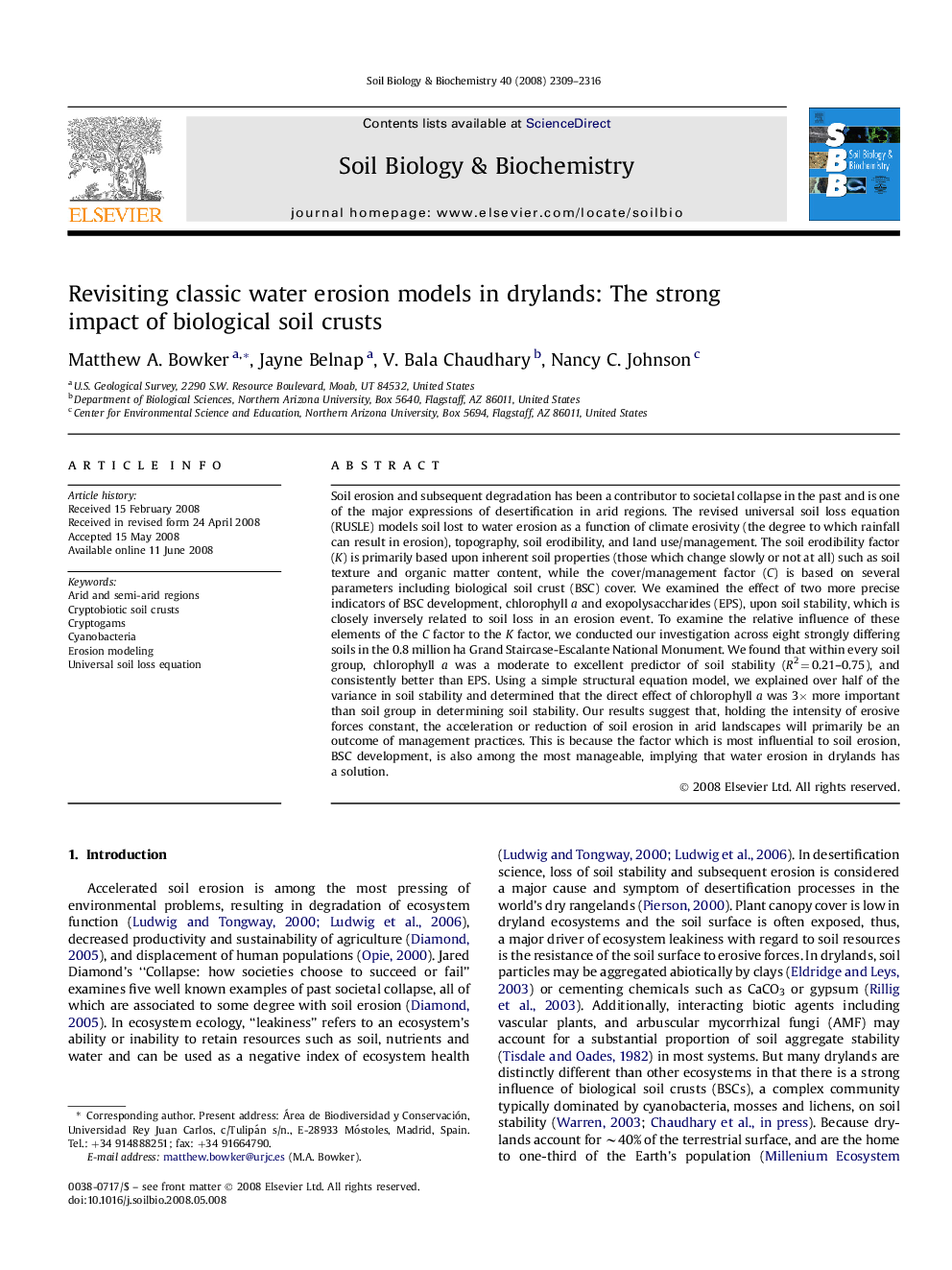| کد مقاله | کد نشریه | سال انتشار | مقاله انگلیسی | نسخه تمام متن |
|---|---|---|---|---|
| 2026892 | 1070054 | 2008 | 8 صفحه PDF | دانلود رایگان |

Soil erosion and subsequent degradation has been a contributor to societal collapse in the past and is one of the major expressions of desertification in arid regions. The revised universal soil loss equation (RUSLE) models soil lost to water erosion as a function of climate erosivity (the degree to which rainfall can result in erosion), topography, soil erodibility, and land use/management. The soil erodibility factor (K) is primarily based upon inherent soil properties (those which change slowly or not at all) such as soil texture and organic matter content, while the cover/management factor (C) is based on several parameters including biological soil crust (BSC) cover. We examined the effect of two more precise indicators of BSC development, chlorophyll a and exopolysaccharides (EPS), upon soil stability, which is closely inversely related to soil loss in an erosion event. To examine the relative influence of these elements of the C factor to the K factor, we conducted our investigation across eight strongly differing soils in the 0.8 million ha Grand Staircase-Escalante National Monument. We found that within every soil group, chlorophyll a was a moderate to excellent predictor of soil stability (R2 = 0.21–0.75), and consistently better than EPS. Using a simple structural equation model, we explained over half of the variance in soil stability and determined that the direct effect of chlorophyll a was 3× more important than soil group in determining soil stability. Our results suggest that, holding the intensity of erosive forces constant, the acceleration or reduction of soil erosion in arid landscapes will primarily be an outcome of management practices. This is because the factor which is most influential to soil erosion, BSC development, is also among the most manageable, implying that water erosion in drylands has a solution.
Journal: Soil Biology and Biochemistry - Volume 40, Issue 9, September 2008, Pages 2309–2316